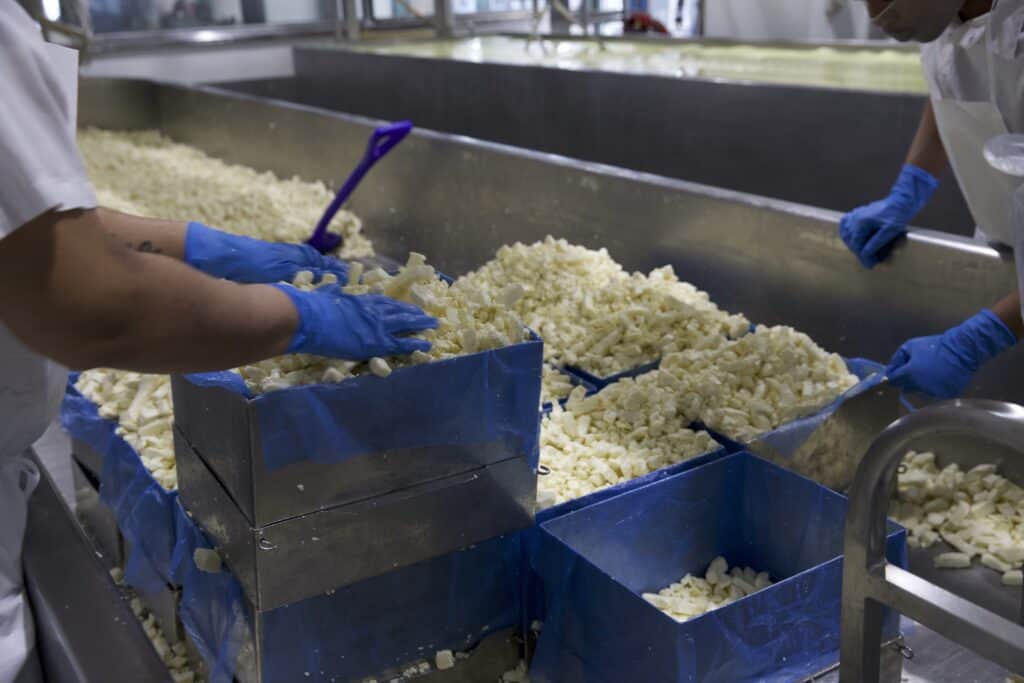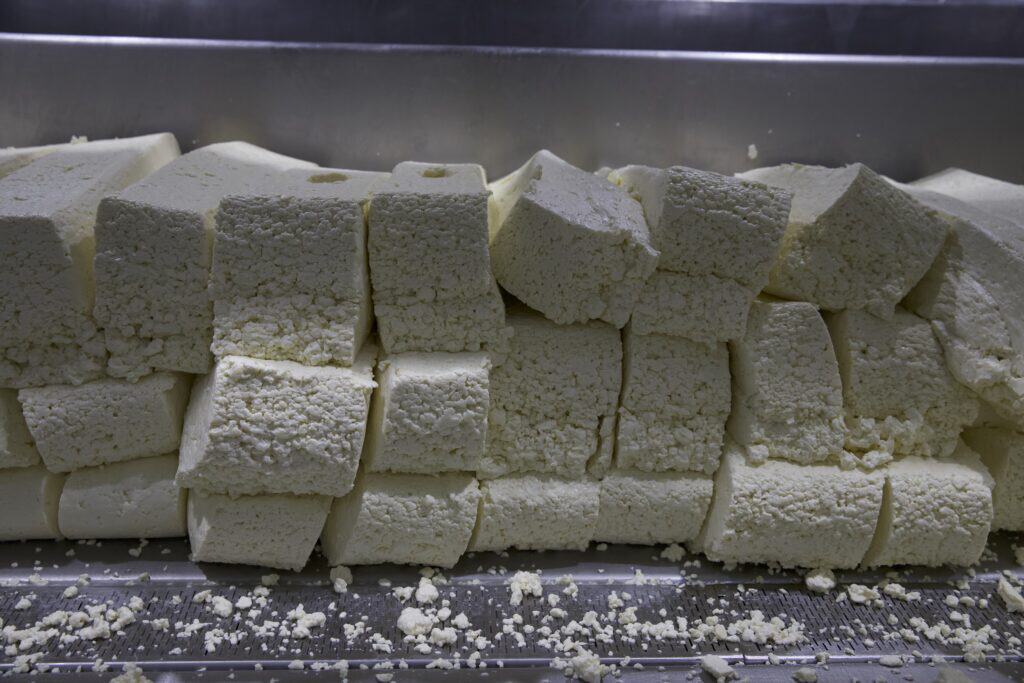Reflecting on my time at the city’s cheesemaking institution.

Like walking through a picked-clean ribcage, I stepped past the gaping door frame. Nothing remained of the room besides the pockmark drain holes, a hanging light, and battered windows, now appearing so much larger in the empty space. Layers of flooring had been ripped up to reveal concrete, walls removed, and stainless steel equipment whisked away, leaving no trace of the frantic, kinetic, pounding pace of cheesemaking that once defined this space.
I lived in this room.
For four years I pulled on my red rubber boots and stepped onto the production floor long before sunrise. I oscillated from pasteurizer to vat, drain table to hydraulic press, and breaking table to vacuum sealer as my head filled with the crashing of metal on metal, steam hissing through pipes, music blasting, and cheesemakers shouting to be heard past my earplugs.
On this floor, I smashed my fingers, tore apart the tendons in my wrist and shoulders, cried in pain and frustration, laughed myself light-headed, built a body I learned to love, wiped mold, scrubbed butter fat, burned my nostrils with cleaning chemicals, and seared my fingertips with too-hot water. In this room, I grew, changed, and found myself. And, I made thousands and thousands and thousands of pounds of cheddar cheese.

Beecher’s Handmade Cheese stood on the corner of 20th and Broadway in Manhattan’s Flatiron District since 2011, when I was a junior in high school. I worked my first shift two months after graduating college and my final shift four years later. But I never really left. I visited to catch up and hear about the new guys, the recent injuries, and the drama. I stopped by to pick up fresh curd and snag “take-me” pieces from blocks cut for fat and moisture testing. I came back for a month after finishing journalism school to help carry 40 lb blocks up and down the stairs when the elevator broke.
Beecher’s was always there—a steady presence to point to when people asked about my past. I am a cheesemaker, a Beecher’s cheesemaker, whose hands they mean in the name: Beecher’s Handmade Cheese.
But in October 2023, on a Friday when I went to pick up curds, the familiar dented side door was marred with a slip of paper saying, “PERMANENTLY CLOSED.” The production manager got the news Wednesday night and canceled the milk order for Thursday morning. No more cheese was made.
In hindsight, I should’ve known it was coming. In New York, everything shifts and changes with the seasons. Institutions unceremoniously vanish. You don’t even notice ‘til you walk past and wonder, “When did that become a bank?”
As my partner says, “If you hate it, don’t worry, it’ll be gone soon. If you love it, cherish it, it won’t last long.”
I hated it there. I hated the pain of repetitive injuries that tore me from sleep, the coworkers who sat on their phones in the changing room when we needed all hands on deck, and the exhaustion that sucked away my social life and shortened my fuse.
I loved it there. I loved the pace of production, the tangible proof of a hard day’s work, the ache in my muscles, the easy sleep that came after early mornings and ten-hour shifts, my fridge bursting with America’s best cheeses picked from the case.
But whether I loved or hated it didn’t matter when the landlord doubled the rent. The space sits empty. No one makes aged cheese in New York City.
Flagship is still made in Seattle, but after so many years it feels weird to buy pre-cuts crafted so far away. I don’t know the clang of their pasteurizer, the thump of their curd mill, or the whoosh of their vacuum sealer.
Luckily, my fridge is packed with aging 4 lb blocks. I’ll cherish these remaining pieces of Beecher’s NYC. I love Flagship at every age, from day of curds to 4 year (the most mature). I’m not sure when I’ll be ready to break open my last pieces. I’m patient and I don’t like change, so it could be a while. I want to know Flagship at eight, ten, at 20 years. To taste a cheese at different stages of aging is an oddly intimate gift—a relationship with fermentation and maturation I never dreamed of having.
But having less Flagship means I can reach past the familiar. I’m falling in love with a goat camembert, a nutty blue, and a caraway alpine. I’m making ricotta and cream cheese at home. I’m expanding my horizons and letting go of Beecher’s NYC one piece at a time.
Related:
- When Milkmaids Meet: A Movement Finds Its Footing
- Trenton Speer Reflects on His Journey From Challenging Teen to Cheesemaker
- A Cheesemonger Travels to Spain to See How Manchego is Made



